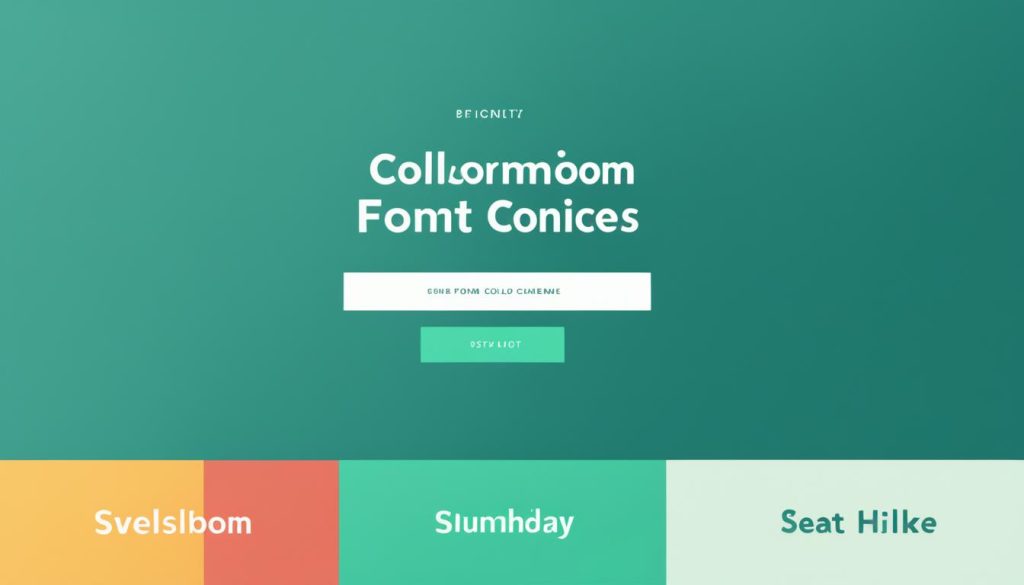Titling artwork is an essential aspect of the art world. It helps create an identity for your pieces and engages audiences. While some artists may feel that titles are unnecessary, they play a crucial role in attracting viewers and potential buyers. In this article, I will explore the importance of titling artwork and provide tips on how to come up with effective and impactful titles.
Key Takeaways:
- Titling artwork is important for creating an identity and engaging audiences.
- Effective titles can attract viewers and potential buyers.
- Tips for titling artwork include considering the theme, seeking inspiration, and ensuring relevance.
- Consistency and professionalism in artwork naming increase credibility as an artist.
- By carefully selecting titles, artists can enhance the impact of their artwork and attract potential buyers.
The Impact of Titles on Artwork Sales
The title of an artwork plays a crucial role in its sales. A well-chosen title can captivate potential buyers and establish a connection between the artwork and the viewer. Conversely, a poorly chosen title can deter buyers and overshadow the artistic value of the piece.
In a recent conversation, I spoke with an artist who shared her concerns about the titling of her work. The curator of an exhibition expressed doubts about the titles, suggesting that they may be affecting the saleability of her pieces. This interaction underscores the importance of selecting titles that resonate with the target audience and accurately represent the concept and aesthetic of the artwork.
“The right title can evoke emotions and curiosity, drawing potential buyers to engage with the artwork and consider making a purchase.”
When browsing through an art gallery or an online platform, potential buyers are often drawn to catchy and intriguing titles. The right title can evoke emotions and curiosity, drawing potential buyers to engage with the artwork and consider making a purchase. It acts as a hook, capturing attention and encouraging further exploration of the piece.
Moreover, the title serves as a glimpse into the artwork’s concept and narrative. It helps viewers understand the artist’s intentions and provides context for their interpretation. A well-crafted title can add depth and meaning to the artwork, enhancing its perceived value and increasing the likelihood of a sale.
However, it is important to strike a balance between creativity and clarity when choosing a title for your artwork. While a unique and imaginative title can attract attention, it should still be easily understandable and relatable to potential buyers. Avoid using overly obscure or convoluted titles that might alienate or confuse viewers.
Creating Titles that Sell
When selecting a title for your artwork, keep the following tips in mind:
- Capture the essence: Choose a title that encapsulates the core theme or concept of your artwork.
- Evoke emotions: Use words that elicit an emotional response and resonate with viewers.
- Be concise: Keep the title short and impactful to grab attention quickly.
- Consider the target audience: Think about the preferences, interests, and experiences of your potential buyers.
Remember, the aim is not to mislead or deceive buyers with an attention-grabbing title but rather to spark their interest and create a connection between them and your artwork.
By selecting titles that have a strong impact and align with the artwork’s concept, artists can significantly improve the sales potential of their pieces.
Tips for Titling Your Artwork
When it comes to titling artwork, there are several strategies and techniques that artists can employ. By choosing the right title, you can enhance the impact of your artwork and attract viewers’ attention. Here are some tips for titling your artwork effectively:
- Consider the theme or concept: Start by carefully considering the underlying theme or concept of your artwork. The title should reflect the essence of your piece and provide viewers with a deeper understanding of its meaning.
- Draw inspiration from other artists: Take inspiration from other artists’ exhibition names or artwork titles. This can help you gain ideas and perspectives that you may not have considered before.
- Seek feedback from others: Don’t be afraid to ask for feedback from friends, fellow artists, or even art enthusiasts. Their insights can provide valuable perspectives and inspire you to come up with unique and captivating titles.
- Utilize online resources: Explore the various online resources available, such as name generators or art title suggestion websites. These tools can provide fresh ideas and help stimulate your creativity.
- Create intrigue: The chosen title should be easy to understand and relevant to your artwork. However, it should also stand out and pique the curiosity of viewers, enticing them to explore your piece further.
Remember, the title of your artwork serves as a bridge between your creation and your audience. It should effectively communicate the essence of your piece while capturing the attention and curiosity of potential viewers. By following these tips, you can come up with compelling titles that truly enhance the impact of your artwork.
The Importance of Consistency and Professionalism in Artwork Naming
Consistency and professionalism are crucial when it comes to naming your artwork. By using your real name instead of a pseudonym or nickname, you establish a strong professional identity and increase your credibility as an artist. This not only helps you build a personal brand but also ensures that your work is easily recognizable and traceable across different platforms and exhibitions.
Using your real name creates a sense of trust and authenticity, allowing viewers and potential buyers to connect with your art on a deeper level. It adds a personal touch and demonstrates your commitment to your craft. Whether you’re exhibiting in galleries, participating in art shows, or promoting your work online, maintaining a consistent and professional approach to naming your artwork will help you stand out in the competitive art world.
While some artists may choose to use pseudonyms for anonymity or to create a distinct artistic brand, it’s important to consider the potential confusion it may cause. Using your real name ensures that there is no ambiguity around your identity and helps avoid any misunderstandings.
Moreover, using your real name also has SEO benefits. When people search for your artwork online, having your real name associated with it increases its visibility and search engine rankings. This allows potential buyers and art enthusiasts to find your work more easily, leading to increased exposure and potential sales.

“Using my real name was one of the best decisions I made as an artist. It not only helped in establishing my professional identity but also allowed me to connect with my audience on a more personal level. It has definitely boosted my credibility and made my artwork more discoverable online.”
The Impact of Professionalism on Online Searches
When it comes to online searches, using your real name can have a significant impact on search engine optimization (SEO). Search engines prioritize websites and content that demonstrate professionalism and authenticity. By using your real name, you increase the chances of your artwork appearing higher in search engine results.
On the other hand, using a pseudonym or nickname can make it difficult for potential buyers and art enthusiasts to find your work. It can lead to confusion and decreased visibility, making it harder for your art to reach its intended audience. Consistency and professionalism in naming your artwork can prevent these issues and ensure that your work gets the recognition it deserves.
The Benefits of Art Naming Conventions
In addition to using your real name, adhering to art naming conventions can further enhance your professionalism and credibility as an artist. Art naming conventions refer to the established guidelines and practices in the art world for naming artworks.
- Clear and descriptive titles: Choose titles that clearly and accurately communicate the essence and subject matter of your artwork. This allows viewers to understand and engage with your artwork more effectively.
- Avoid generic titles: Try to steer clear of generic or clichéd titles that may diminish the uniqueness and impact of your artwork. Instead, opt for titles that are creative, thought-provoking, and memorable.
- Consistency in formatting: Maintain consistency in the formatting of your titles, such as capitalization and punctuation. This creates a cohesive and professional presentation of your work.
- Consider the international audience: If you intend to showcase your artwork globally, consider the potential cultural differences and ensure that your titles can be easily understood and appreciated by an international audience.
By following these art naming conventions, you not only demonstrate your professionalism but also enhance the overall experience for viewers and potential buyers.
By consistently using your real name and adhering to art naming conventions, you set yourself apart as a professional artist and increase your chances of attracting attention and selling your artwork. So, take the time to carefully consider and craft titles that reflect your art’s essence and resonate with your target audience.
Conclusion
Titling artwork is a vital part of the artistic process. It holds the power to significantly impact the reception and sales of your artwork. By taking the time to carefully select titles that accurately represent the concept of your artwork, resonate with your target audience, and create intrigue, you can elevate the impact of your creations and attract potential buyers.
Consistency and professionalism in naming your artwork is also crucial. Using your real name instead of pseudonyms or nicknames establishes a strong professional identity, increases your credibility as an artist, and ensures that your work is easily recognizable and traceable across different platforms and exhibitions.
With these essential tips in mind, you can effectively title your artwork for maximum impact. Remember to consider the theme or concept of your artwork, draw inspiration from fellow artists, and seek feedback from trusted sources. By doing so, you can create titles that are easy to understand, relevant to your art, and stand out to capture viewers’ attention.
FAQ
Why is titling artwork important?
How can I come up with effective and impactful titles for my artwork?
Should I use my real name or a pseudonym when naming artwork?
How can titling artwork impact sales?
Why is consistency and professionalism important in artwork naming?
Share this content:






